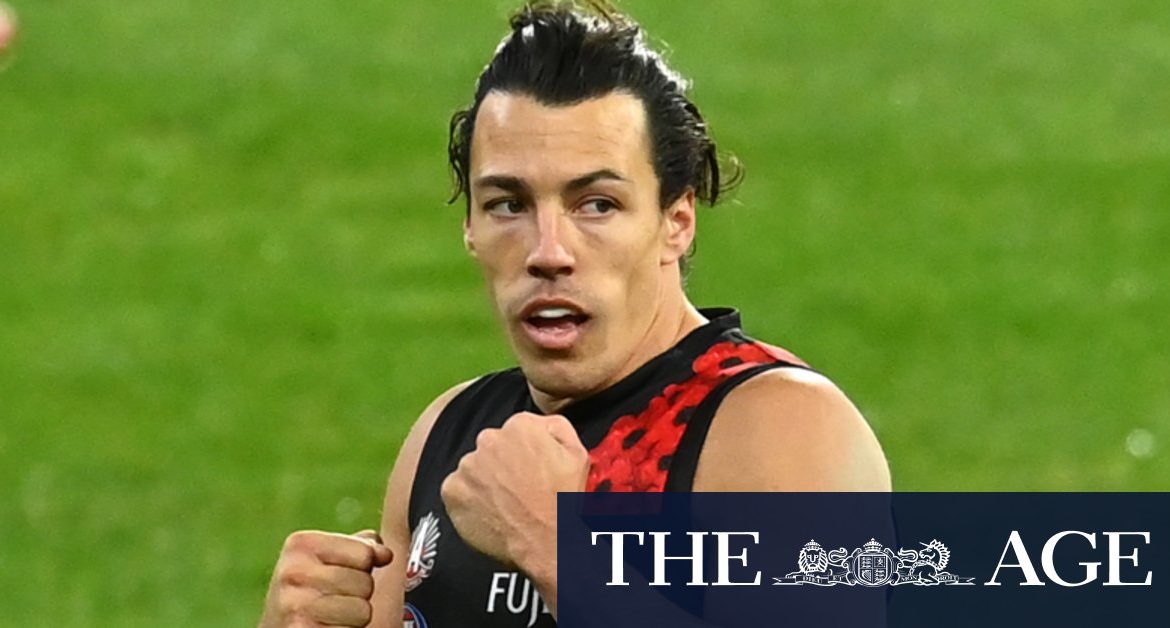Martin and Shiel, like most stars, have a contract for 2021 and well beyond. Next year, they will lose 8.5 per cent from their wages. But, since they are contracted for 2022 and beyond, their real cut is only 3.5 per cent, because the amount they lose this year will be given back to them in either 2022 or 2023 (or spread over both).
If Martin is on an average of $1.2 million, he will lose about $102,000 (8.5 per cent) next year. But he will get the 5 per cent cut back in 2022 (or 2023), in dollar terms. This means he would receive $60,000 in 2022/23 when the AFL hopes to normalise further; so the total loss of money over the two years would be $40,000, or 3.5 per cent.
Dylan Shiel falls into the first category of players.Credit:Getty
If a player was on $300,000, he would still get $274,500 in 2021, but would get back $15,000 in 2022 or 2023.
There is another sub-category of players in this situation, call them PLAYER 1.5 – those who signed before the AFL froze contracts due to COVID-19 and the shutdown, but who do not have a contract beyond 2021. They come out contract at the end of next year.
Essendon’s Zach Merrett, Carlton’s Patrick Cripps and Melbourne’s Max Gawn – all free agents in 2021 – fall into this sub-group.
They will lose only 3.5 per cent of their wage next year, because they cannot claw it back in the following years.
PLAYER TWO
Those who signed contracts after the contract freeze was lifted. Collingwood’s Darcy Moore, Geelong free agent Jeremy Cameron and new Bomber Jye Caldwell fall into this category.
Their status is simply determined by the clauses in their individual contracts. For example – and we don’t know what his contract says – but Caldwell might have a clause, as many if not most players in this group do, specifying that he will take a certain cut.
If the clause says it’s an 8 per cent cut, then that’s what he will lose. He cannot claw it back in 2022 – unless his contract specifies.
But if it’s a 2 per cent cut in the event of reduced total player payments (which it is), then that’s all he loses.

Collingwood defender Darcy Moore signed a new contract after the pay freeze.Credit:Getty Images
Clubs were encouraged by the AFL to protect themselves and so it is expected that most players who signed after the freeze will have clauses that cut their pay, even if it’s only by the 3.5 per cent.
Some of these players will be looking closely at the fine print, because the total cut in player payments is nearly three times the mandatory cut of 3.5 per cent (barring first- and second-year players and those on the mininum wage).
PLAYER THREE
Those who are still out of contract.
This is the simplest situation of all. If a player has not signed a deal for 2021 – and few are in this camp – then the contract he signs does not change at all. His contract amount and conditions don’t change a millimetre.
If he signs now for $350,000 plus bonuses for games played, that’s what he’ll get.
Collingwood’s Jordan De Goey is signing a new deal and, unless he and the Pies have agreed on specific reductions in the deal, he would get what the contract says.
There are two important exceptions to the three different castes of player: those on the minimum
Loading
wage and first- and second-year players.
The minimum-wage player of 2021, due a base of $110,000 (plus match payments, which don’t change), will get the same – a recognition of the need to protect the lowly paid.
The AFL is cutting first-year players’ salaries with what will be a more substantial cut, overall, of between $5000 and $10,000. The percentage is yet to be determined.
Jake Niall is a Walkley award-winning sports journalist and chief AFL writer for The Age.
Sam McClure is a sport reporter for The Age and winner of ‘best news reporter’ at the AFL Media Association awards.
Most Viewed in Sport
Loading







